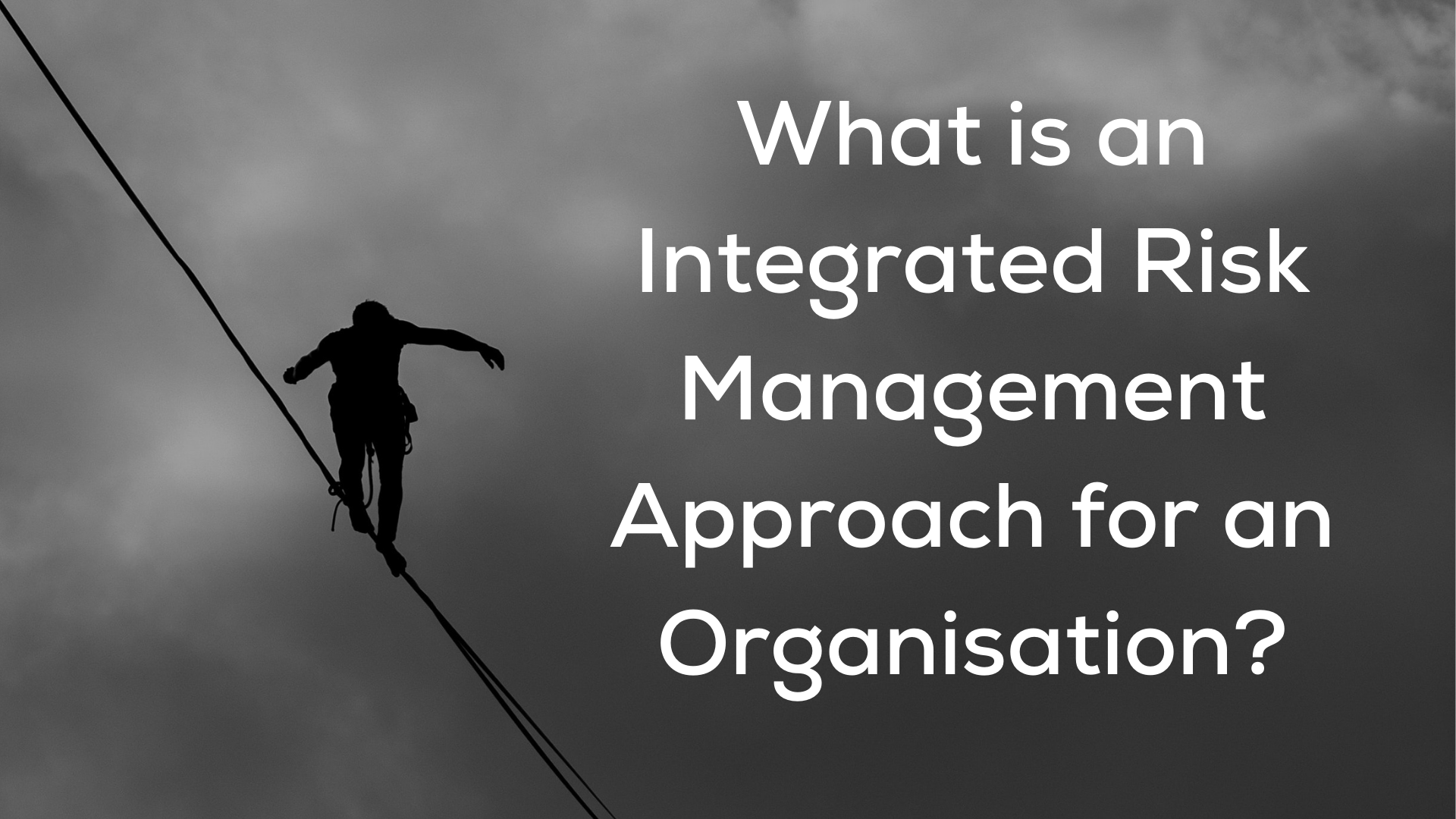Risk management is the process of identifying, assessing, and responding to risks. Risks can be both threats and opportunities. Risk management is important for all organizations because it helps them identify potential problems and take steps to prevent them from happening.
There are many different ways to approach risk management, but the most effective approaches are those that are integrated. When a company studies data by maintaining reports with the help of companies like Cappitech, they enhance their risk management through compliance with JFSA (Japan Financial Services Agency). That being said, the data is centralized and regulated, making it easier to produce accurate reports, which is a prerequisite for risk assessments.
Today we’re going to share an actionable integrated risk management definition and explain what your organization can do to embrace an integrated approach.
What is an integrated risk management approach for an organization
Integrated risk management (IRM) involves using a variety of methods and tools to assess and respond to risks. It takes into account all aspects of an organization, including its people, processes, products, and environment.
An IRM approach is determined by the following attributes:
- Strategy: Strategy is one of the most important aspects of risk management. A good strategy will help you to achieve a long-term or overall aim through a plan of action.
- Assessment: Identifying, assessing, and responding to risks in a timely and effective manner is crucial. It will also help you to prioritize risks and ensure that resources are allocated where they are needed most.
- Response: Once risks have been identified, mechanisms will need to be implemented to mitigate them.
- Communication and reporting: Organization stakeholders need to be informed of risks and responses when appropriate.
- Monitoring: Monitoring risks is important because it allows you to track their progress and ensure that they are being managed effectively. Mechanisms to reduce risks also need to be monitored so that they are effective and continue to meet the organization’s needs.
- Technology: Integrated risk management solutions GRC software can play a huge role in implementing the approach across the organization. It can provide the valuable architecture for responding to risk quickly and effectively.

The importance of integrating all aspects of your organization when assessing and responding to risks
In today’s dynamic and interconnected business environment, your organization must adopt a comprehensive approach to risk assessment and management to ensure the long-term success and sustainability of your organization. To gain a holistic perspective on risk, you need to consider a multitude of factors. Financial risks, such as market fluctuations, credit issues, or liquidity challenges, should be at the top of your mind. Equally critical are operational risks, which encompass your internal processes, supply chain vulnerabilities, and technology failures, as they have the potential to disrupt your day-to-day operations. You must diligently monitor compliance risks related to regulations and legal obligations to avoid potential legal repercussions.
Furthermore, it’s crucial to assess the risks associated with your company’s products and services, such as product liability, quality control, and market demand shifts. In the 21st century, global interconnectedness and growing awareness of environmental issues mandate that you also address environmental risks. These include factors like climate change, resource scarcity, and sustainability concerns, which can significantly impact both your operations and reputation. To minimize the damage caused to the environment, you may want to consult environmental consulting firms for guidance on adopting sustainable practices. Whether you opt for Hazmat Consulting or waste management services, these firms can offer you the necessary expertise in assessing and mitigating the environmental impact of your business operations.
The cost-benefit of integrating your organization’s different functions when assessing and responding to risk
Research has shown that the benefits of integrating all aspects of your organization when assessing and managing risks can be significant. Organizations that use integrated risk management systems can gain a significant improvement in their operating margin over those that don’t. Furthermore, companies that have an effective risk management strategy are much less likely to be hit by a costly crisis.
Integrating your organization’s different functions when assessing and managing risks
One of the best ways to effectively integrate your organization when making decisions about risk is through the use of metrics. By developing relevant indicators which measure the progress of your risk mitigation strategies, you can better assess how effective they are in achieving your goals. Metrics will also be integral when determining which risks require the most attention and where to allocate resources.
Stakeholders should also be involved when developing a risk management strategy for your organization. Depending on the size of your organization, this might include employees, board members, customers, and suppliers. It is important to involve all these groups when assessing risk because most stakeholders are affected by an organization’s actions. By involving all aspects of an organization in the assessment process, you can gain valuable insights which can help improve risk management practices.
Below you can find some tips to keep in mind when informing stakeholders and employees about the importance of an integrated risk management program:
- Be clear and concise in your communication and avoid using jargon or acronyms that others may not understand.
- Make sure your messages are properly organized and easy to follow.
- Always take the time to listen to others carefully before responding and respond promptly to messages, even if you can only provide a short response.
- Avoid sending negative or critical messages – always bring the focus back to the benefits of implementing an integrated view.
Read More: 6 Simple Ways to Boost Employee Morale
Why it’s important to have a plan in place before disaster strikes
An integrated risk management approach is important for organizations because it allows them to plan for potential disasters before they happen. This approach helps to ensure that the organization is prepared for any type of emergency, and it also helps to improve communication between different departments. For instance, in regions prone to wildfires, conducting a Type 4 Fire Risk Assessment by Meritas or similar experts can be a proactive step in assessing and mitigating fire-related risks in certain environments, helping to protect not only the organization’s assets but also the safety of its employees and the surrounding community. By taking a proactive approach to risk management, the organization can stay compliant and reduce the chances of a disaster occurring.

5 steps you can take today to start developing an effective integrated risk management strategy for your company or organization
- Define your company’s risk appetite: Risk appetite is the level of risk that a company is willing to take on to achieve its strategic objectives. A risk profile can be measured in terms of monetary value, or in terms of the amount of risk that is acceptable to the company.
- Assess your company’s current risk posture: Risk posture is a measure of how well a company is prepared to deal with potential risks. It can be measured in terms of the company’s ability to identify, assess, and respond to risks, as well as its ability to recover from any incidents that may occur.
- Identify and assess risks facing your company: There are many ways to identify and assess risks facing your company. One way is to conduct a risk assessment, which involves identifying potential risks and assessing their likelihood and impact. You can also use risk analysis and risk management tools such as risk registers, risk matrices, and impact/probability tables.
- Establish risk response strategies: Once you have identified and assessed the risks facing your company, you need to establish risk response strategies. This involves deciding how you will deal with each risk, and includes concepts like risk mitigation, risk transfer, and risk avoidance.
- Implement your risk management strategy: Once you have developed a risk management strategy, it is important to implement it effectively. This means ensuring that all stakeholders are aware of the risks facing the company and the steps that have been taken to address them. It also means monitoring and reviewing the risk management process on a regular basis to ensure that it adequately addresses the company’s risks.
Establishing a risk-aware culture is fundamental
An integrated risk management approach is a vital part of any organization, as it helps to ensure that the company is prepared for any type of emergency. By taking a proactive approach to risk management, you can reduce the chances of a disaster occurring.
There are several steps you can take today to start developing an effective integrated risk management strategy for your company or organization. Follow these tips, and be sure to communicate with all stakeholders regularly about the importance of risk management.

